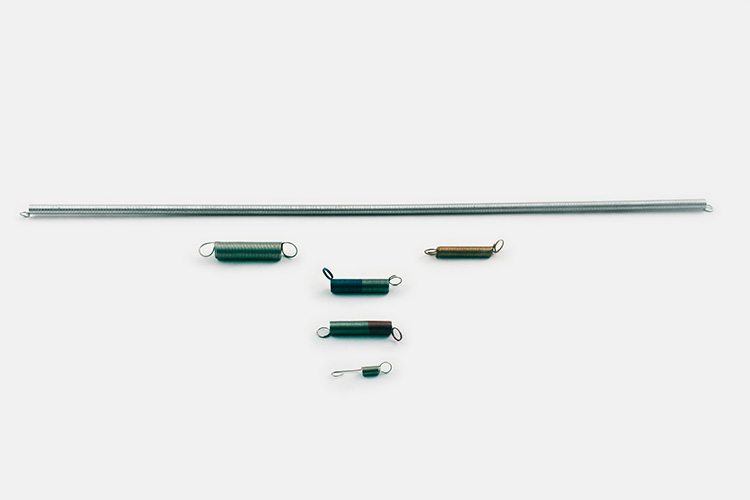Get unique, complex parts easily. No matter your requirements, Chaoyi Spring creates hard-to-produce coil springs and wire forms.
Let us help you create the custom wire form you need, from S-hooks and J-hooks to utility hooks and more.
We work closely with customers across a wide range of industries, helping them design and manufacture made-to-order parts.
Why choose Chaoyi Spring? We prioritize customer-focused collaboration, modern equipment and the latest technology to make your parts per print.
Find the information and guidance you need, from measuring a spring to learning about materials, placing an order and much more.
When it comes to mechanical springs, two common types stand out: tension springs and torsion springs. While both serve the purpose of storing and releasing energy, they differ in their


When it comes to mechanical springs, two common types stand out: tension springs and torsion springs. While both serve the purpose of storing and releasing energy, they differ in their design, functionality, and applications. Understanding the distinctions between tension and torsion springs is crucial for selecting the right spring for a specific need. This article will delve into the characteristics, applications, and advantages of each spring type, shedding light on their unique properties and how they contribute to various mechanical systems.

Tension springs, as the name suggests, are designed to store and release energy when stretched or extended. Imagine a simple rubber band – that's a basic example of a tension spring. They are typically coiled in a helical shape, with the ends hooked or looped for attachment. When a force is applied to pull the ends apart, the spring stretches, storing potential energy. Upon release, the spring contracts, returning to its original length and releasing the stored energy.
Tension springs are commonly found in various applications, including:
One of the key advantages of tension springs is their ability to store significant energy within a compact size. They are also relatively simple to manufacture and can be easily customized to meet specific requirements.
Torsion springs, on the other hand, work by storing energy when twisted or rotated. They are typically coiled in a helical shape, but with the ends fixed to a central shaft or axle. Applying a torque or rotational force to the shaft causes the spring to twist, storing potential energy. Upon release, the spring unwinds, releasing the stored energy and producing a rotational force.
Torsion springs are widely used in various applications, including:
Torsion springs are known for their high torque output and their ability to handle significant loads. Their compact design and adaptability to various shapes and sizes make them suitable for diverse applications.
When deciding between a tension spring and a torsion spring, several factors need to be considered:
A tension spring is ideal for applications that require linear force, where stretching or extension is the primary mode of operation. They are compact and suitable for situations where space is limited. Torsion springs, on the other hand, excel in applications that involve rotational force or torque. They can handle high loads and are often used in mechanisms that require significant twisting or turning.
To understand the strengths and limitations of each spring type, let's compare their advantages and disadvantages:
Tension springs and torsion springs are essential components in numerous mechanical systems, each with its unique characteristics and applications. Understanding their differences and advantages is crucial for selecting the right spring for a specific need. Tension springs excel in applications requiring linear force and compact designs, while torsion springs are preferred for high torque output and heavy load handling. By carefully considering the application requirements, space limitations, load capacity, and desired lifespan, engineers and designers can choose the most appropriate spring type to ensure optimal performance and reliability.
In the world of mechanical systems, tension and torsion springs play vital roles, contributing to a wide range of functionalities. By understanding the distinctions between these two spring types, we can make informed decisions about their application, ensuring that our designs are both efficient and reliable. Whether it's the smooth closing of a door, the precise movement of a clock hand, or the robust lifting power of a garage door, tension and torsion springs continue to power our world in countless ways.
Browse some of the custom wire forms and springs that we manufacture. Don’t see what you need? We specialize in made-to-order products that meet your application requirements.
Visit Our GalleryNeed a custom wire form or coil spring? We make it work. Fill out the contact form and a representative will respond within 1 business day. If you have a PDF or CAD file, you can submit to request a quote.